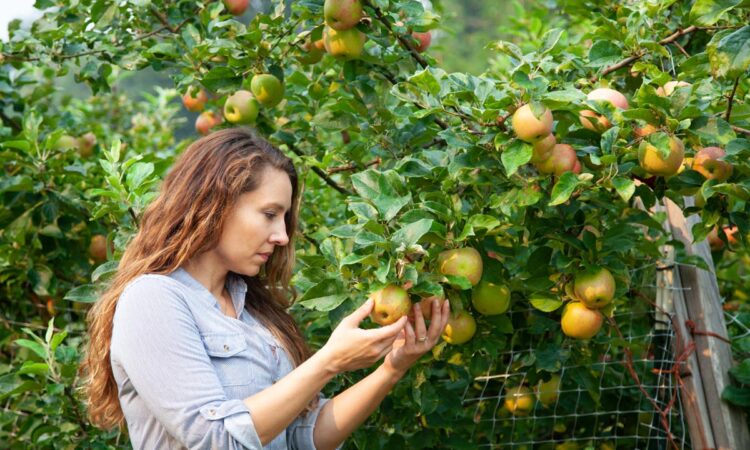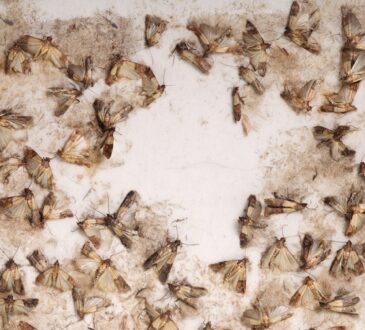
Apple trees, with their versatile nature, are well-suited to the British climate. However, their successful cultivation hinges on understanding the specific climatic and soil requirements. The UK’s temperate weather, characterized by mild winters and warm summers, provides an ideal environment for many apple varieties. Nonetheless, selecting a variety that is well-adapted to your local conditions is crucial.
Soil quality significantly influences tree health and fruit production. Apple trees thrive in well-drained, loamy soils with a pH ranging from 6.0 to 7.0. It is recommended that you check the pH of your soil before planting and add soil amendments as needed. Improving soil structure and fertility with organic matter can also bolster tree health and yield.
Choosing the Right Variety
The selection of an apple tree variety is pivotal, influenced by factors such as taste preferences, intended use (eating, cooking, or cider-making), and disease resistance. Britain is home to a plethora of traditional and modern apple varieties, each with its unique flavor profile and culinary application. Some popular eating apples include ‘Cox’s Orange Pippin’, renowned for its exquisite flavor, and ‘Gala’, favored for its sweetness and crisp texture. For cooking, ‘Bramley’s Seedling’ remains a classic choice, prized for its tartness and fluffy texture upon cooking.
Disease resistance is another critical consideration. Certain varieties, such as ‘Liberty’ and ‘Freedom’, have been bred for higher resistance to common apple diseases, making them suitable choices for organic gardening or for gardeners looking to minimize chemical use.
Pollination Groups and Partners
Apple trees are predominantly cross-pollinated, meaning that for fruit production, the presence of another apple tree of a different variety but similar flowering time is essential. Apple varieties are categorized into pollination groups based on their blooming period. When choosing apple trees for sale, ensure they belong to the same or adjacent pollination groups to synchronize their flowering and achieve successful cross-pollination.
For smaller gardens or limited spaces, consider dwarf or semi-dwarf varieties grafted onto rootstocks that limit tree size. Not only do these smaller trees require less space, but they also tend to bear fruit earlier than their standard counterparts. Some varieties are even available as self-fertile or partially self-fertile, which can be beneficial if garden space permits the planting of only a single tree.
Planting and Initial Care
The optimal time for planting apple trees in the UK is during the dormant season, from late autumn to early spring. This period allows the trees to establish roots in the soil before the onset of growth in spring. When planting, ensure the graft union (the point where the variety joins the rootstock) remains above ground level to prevent the variety from rooting directly and negating the rootstock’s size-controlling effects.
After selecting the right location—preferably a sunny spot with shelter from prevailing winds—dig a hole that’s spacious enough to accommodate the tree’s root system without crowding. Incorporating a stake for support, especially for dwarf and semi-dwarf varieties, is advisable to protect against wind damage.
Initial care should focus on regular watering, particularly during the tree’s first few years and in dry periods, to encourage deep root development. Mulching is a great way to keep soil moist and prevent weeds from sprouting. However, ensure the mulch is not piled against the tree trunk to avoid rot.
Advanced Care Techniques
As your apple trees grow, their care evolves. Fertilization becomes crucial once your trees are established. Applying a balanced fertiliser in the spring can encourage good growth and fruit yield. However, it’s essential to avoid over-fertilization, particularly with nitrogen, as it can lead to excessive vegetative growth at the expense of fruiting.
Watering remains a priority, especially during prolonged dry spells. Mature apple trees benefit from a deep watering regime, which encourages roots to seek moisture deeper in the soil, thus improving drought resistance.
Pruning for Health and Productivity
Pruning is perhaps one of the most vital tasks in the care of apple trees, influencing both tree health and the quality of fruit. The primary goals of pruning are to remove dead or diseased wood, improve air circulation, and ensure sunlight penetrates to the interior of the canopy. This not only reduces the risk of disease but also promotes the development of strong, fruit-bearing branches.
Winter, while trees are dormant, is the best time for major pruning. However, light pruning and the removal of water sprouts can be done in summer to maintain the tree’s shape and remove unnecessary growth.
Managing Pests and Diseases
Pest and disease management is critical in apple tree care, with prevention being the most effective strategy. By conducting inspections on a regular basis, problems can be caught before they worsen. Common pests include aphids, codling moth, and apple scab, a fungal disease that affects leaves and fruit. Integrated Pest Management (IPM) strategies, such as encouraging beneficial insects, practicing good garden hygiene, and using resistant varieties, can help minimize pest and disease impact organically.
In severe cases, targeted treatments may be necessary. Opt for environmentally friendly options whenever possible, and apply according to the product’s instructions to minimize impact on beneficial insects and surrounding wildlife.
Harvesting and Storage
The culmination of your efforts, the harvest season, varies depending on the apple variety. Apples are ready to pick when they come away easily from the branch with a gentle twist and when the fruit’s background color changes from green to its mature color, indicating ripeness.
Proper storage can extend the enjoyment of your harvest. Most apples keep well in a cool, dark place, ideally with a consistent temperature just above 0°C. Some varieties can store for weeks, while others last for months under optimal conditions.
Conclusion
Selecting the right apple tree and enjoying the fruits of your labor is both rewarding and enriching. By understanding and meeting the needs of your apple trees, you’re not only cultivating fruit but also contributing to the biodiversity of your garden, providing habitats for beneficial wildlife, and perhaps most importantly, connecting with the cycle of nature in a hands-on, tangible way.



